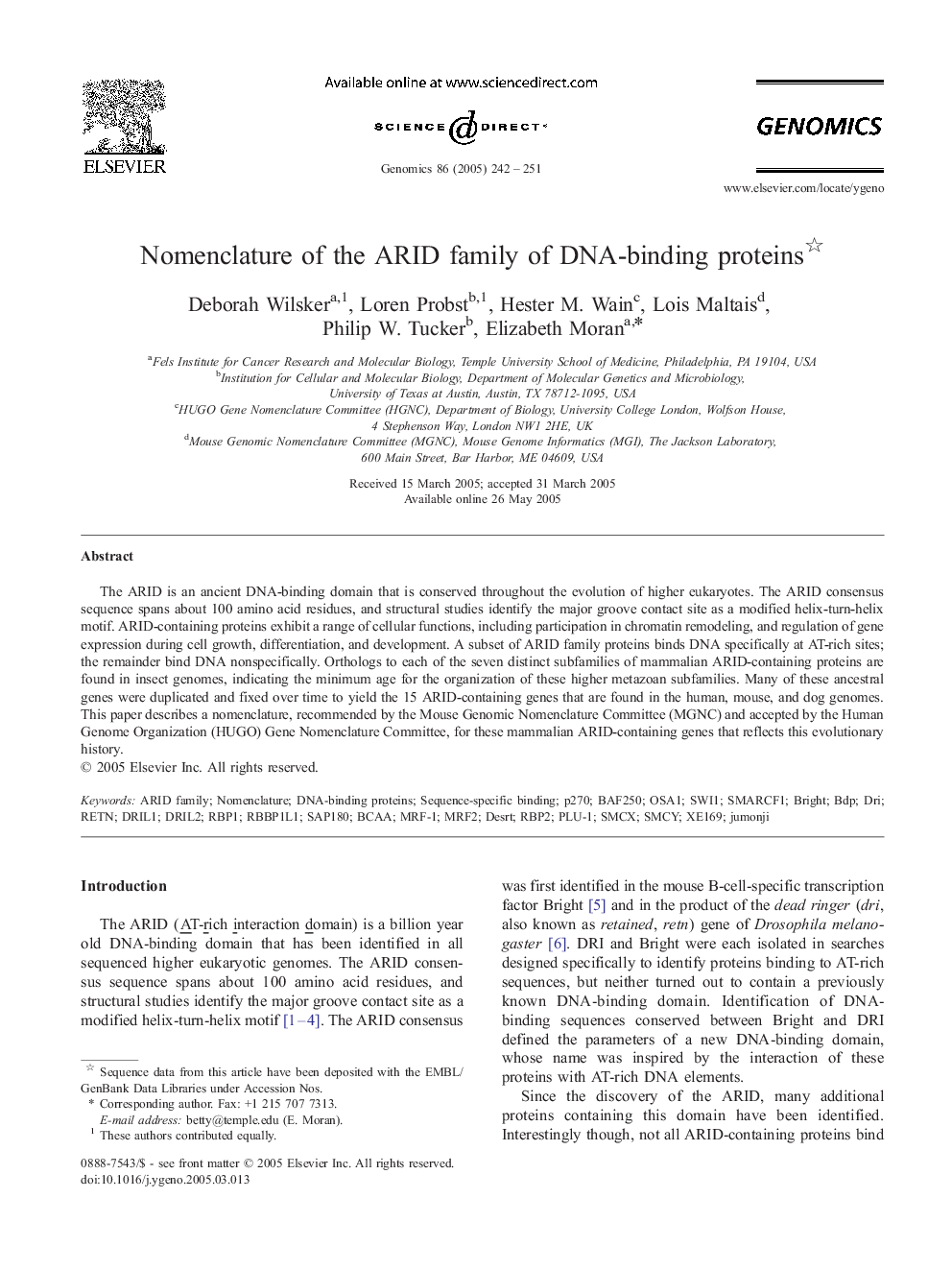| Article ID | Journal | Published Year | Pages | File Type |
|---|---|---|---|---|
| 9131889 | Genomics | 2005 | 10 Pages |
Abstract
The ARID is an ancient DNA-binding domain that is conserved throughout the evolution of higher eukaryotes. The ARID consensus sequence spans about 100 amino acid residues, and structural studies identify the major groove contact site as a modified helix-turn-helix motif. ARID-containing proteins exhibit a range of cellular functions, including participation in chromatin remodeling, and regulation of gene expression during cell growth, differentiation, and development. A subset of ARID family proteins binds DNA specifically at AT-rich sites; the remainder bind DNA nonspecifically. Orthologs to each of the seven distinct subfamilies of mammalian ARID-containing proteins are found in insect genomes, indicating the minimum age for the organization of these higher metazoan subfamilies. Many of these ancestral genes were duplicated and fixed over time to yield the 15 ARID-containing genes that are found in the human, mouse, and dog genomes. This paper describes a nomenclature, recommended by the Mouse Genomic Nomenclature Committee (MGNC) and accepted by the Human Genome Organization (HUGO) Gene Nomenclature Committee, for these mammalian ARID-containing genes that reflects this evolutionary history.
Related Topics
Life Sciences
Biochemistry, Genetics and Molecular Biology
Genetics
Authors
Deborah Wilsker, Loren Probst, Hester M. Wain, Lois Maltais, Philip W. Tucker, Elizabeth Moran,
